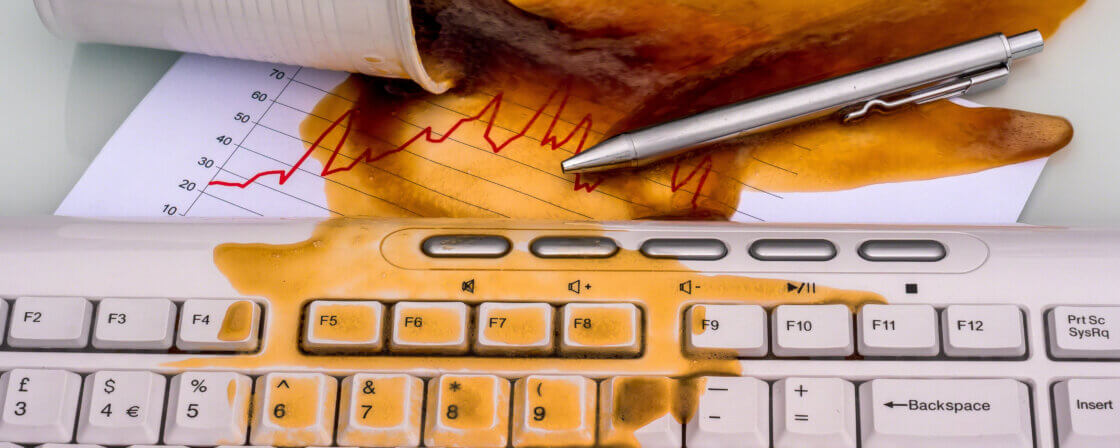When you can claim compensation
As an employer, you have the right to claim damages from your employer whenever an employee is proven to have caused you property damage. However, this is not just your claim; you must prove that actual damage has occurred and that there is a direct link between the employee’s behaviour and the damage. So it is not enough to say that the employee made a mistake, but you must show that it was that mistake that led to the financial loss or damage to your property.
In addition, you must show that the employee was at fault (except in the case of a deficit in entrusted value and loss of entrusted property, where the employee will only be exonerated from liability if they can show that the deficit/loss was not their fault). This can be either deliberate, where the employee acted knowingly against your interests, or negligent, where they did not act as they should have. In both cases you can claim compensation, but the maximum amounts you can claim differ. For example, if an employee is careless with a company car and causes damage, you will have to prove that the damage was his fault and that it was not circumstances beyond his control.
It is therefore important for you as an employer to always document everything carefully. Having photographs, witnesses, logs or other evidence will make things much easier if the employee refuses to acknowledge the damage and the whole thing ends up in court. Only a well-supported case has a chance of succeeding and getting compensation.
Are you solving a similar problem?
Do you need help recovering damages from an employee?
If an employee has caused you harm and you are unsure of the correct course of action, contact us. We can help you assess whether you are entitled to compensation, determine what the maximum amount of employer’s compensation is, prepare an employee’s compensation agreement, and represent you in negotiations and in court.
More information
- When you order, you know what you will get and how much it will cost.
- We handle everything online or in person at one of our 6 offices.
- We handle 8 out of 10 requests within 2 working days.
- We have specialists for every field of law.
What the amount of compensation can be
It is very important that you know how much you can actually claim from the employee. The Labour Code states that if an employee has caused damage through negligence, you can claim up to a maximum of four and a half times his average monthly earnings. This limit protects the employee from unreasonably high claims and you as an employer must respect this ceiling. If you demand more, you risk your claim not being recognised.
However, the situation is different if the employee caused the damage deliberately, under the influence of alcohol or drugs. Then there is also the case of a deficit in entrusted values and loss of entrusted things, if the legal conditions are met (written agreement/confirmation). In such cases, you can claim full compensation, i.e. not only the cost of repair or purchase of new equipment, but also lost profit (only if the damage was caused intentionally), if you can prove that you would have had it without the employee’s actions. There is no limit here and you are entitled to recover everything you lost because of the employee.
For example, if an employee deliberately damages expensive production equipment or his or her actions deprive the company of an important client, you can claim the full amount. This is a key way for you as an employer to protect your assets and business. Again, however, how well you can prove intent and the amount of damages is crucial.
Does the compensation apply after the employment relationship ends?
It may be that an employee’s employment ends before you even know about the damage. However, this does not mean that you lose your claim. It is perfectly possible to compensate your employer for damages after the end of the employment relationship if you can prove that the damage occurred while the employee was still working for you. The law protects you in this respect and allows you to make a claim even against former workers.
However, you must act in time to succeed. There is a statute of limitations, which is normally three years from the time the employer became aware of the damage. If you don’t challenge the former employee for compensation within that time, you could lose your claim. That’s why it’s important to keep a record of the damages and not to delay dealing with them. If the ex-employee refuses to settle, the only option is to take legal action.
Remember also that the former employee may defend himself or herself by claiming that he or she did not cause the damage or that someone else was responsible. This is why it is important to have all the evidence well prepared. The more clearly you can show when and how the damage occurred, the easier it will be to succeed against the former employee. Employers’ compensation does not stop when your employment ends – if you do the right thing, you can still fight for your money afterwards.
Tip for article
Tip: Have you caused your employer millions of dollars in damages and now you’re worried about where you’re going to get the money? You can be worry-free. An employee’s liability for damages is limited. Find out more in our article.
How to set up the compensation prescription and accounting
To keep things in order, it is advisable to have a clearly set up workers’ compensation policy in your company. This should describe how the damage will be handled, who is responsible for quantifying it, how the employee will be called upon to pay and how the compensation will be accounted for. Such a document will save you a lot of trouble because it sets clear rules that apply to everyone.
From an accounting perspective, the employee’s compensation is recorded as a receivable from the employer. The most commonly used account is account 335, i.e. ‘other claims on employees’. If you agree on deductions from wages, you must account for them according to the rules for wages and respect the limits on deductions set by law. In the case of a single payment by an employee, the claim is settled immediately.
A properly set up workers’ compensation policy will put a clear tool in your hands and you will avoid confusion and potential disputes. In addition, if you use a workers’ compensation prescription template, you can quickly have a ready-made document that you just need to adapt to your business. The transparent process will then also send a clear signal to your employees that they must handle company assets responsibly.
Why an employee indemnity agreement is worthwhile
One of the most practical ways to resolve the matter is to enter into a written workers’ compensation agreement with the employee. In such an agreement, the employee acknowledges that he or she caused you the damage and agrees to pay for it – either in one lump sum or in instalments. This means much more security for you, because you have a legally enforceable document in your hand that you can enforce in court if necessary.
The agreement must always be in writing and should state exactly what happened, the amount of the damage and how it will be paid. If you decide to make deductions from your wages, remember that you must also comply with the legal limits. After the deductions, the employee must be left with a portion of his or her wages that will provide at least the basic necessities of life.
By entering into an employee compensation agreement, you not only increase the chances of getting your money back, but also prevent lengthy litigation. If you can come to an agreement, it will also often maintain good relations in the workplace, and sometimes that’s priceless.
Tip for article
Tip: Working relationships bring not only paychecks, but sometimes disputes over money. What if an employee accidentally gets paid more? And when is the employer liable for damages? Based on important court decisions, we will show you how unjust enrichment and damages are assessed in practice.
Summary
If an employee has caused you harm, you have the right to claim compensation. But you must always know what your options and limits are. If you are negligent, you can only claim up to 4.5 times your average earnings; if you are deliberate or drunk, you are entitled to full compensation. Employer’s compensation can be claimed even after the employment relationship has ended, as long as you act in a timely manner and have everything well documented. It also pays to have a clear set of workers’ compensation rules in your company and know how to bill correctly. And if you want to make sure everything goes smoothly, take the opportunity to enter into a workers’ compensation agreement. This will not only give you legal protection, but also an effective way to get your money back. Workers’ compensation is a tool for you to protect your assets and ensure that your business doesn’t suffer unnecessary losses.
Frequently Asked Questions
How does employer's compensation work and when does the 4.5 times limit apply?
Compensation to the employer is governed by the Labour Code. If the employee caused the damage through negligence, you as the employer can claim a maximum of 4.5 times his average monthly earnings. This cap protects the employee from disproportionately high claims. However, if the damage was caused deliberately, under the influence of alcohol or drugs, there is no limit and you can claim the full amount of damages including lost profits.
Can I claim damages from my employer after my employment has ended?
Yes, it is possible to compensate your employer for damages after termination of employment. If the damage occurred while you were still employed, you can also claim against the former employee. The important thing is to act in time – the general three-year limitation period applies. It is therefore worth documenting the damage, asking the employee to pay and, if he refuses, taking legal action.
What should the workers' compensation prescription contain and how is the accounting treatment handled?
The Workers’ Compensation Code should be part of your internal policies and should regulate how you, as an employer, will proceed in the event of a loss. It should clearly set out the process for quantifying damages, the procedure for requesting reimbursement and the persons responsible. From an accounting perspective, compensation is most often charged to account 335 – Other claims against employees. Having a clear employee compensation policy will make the process transparent and prevent disputes.
How can I use the model Workers' Compensation Agreement?
If you want to make sure that your workers’ compensation claim is settled quickly and without a trial, it is ideal to enter into a workers’ compensation agreement. A template agreement will help you set all the important details – the description of the damages, the amount, the method of payment and the terms. By signing the agreement, the employee acknowledges liability, making it easier for you to recover if necessary. Such a document carries significantly more weight than a verbal agreement and protects your interests.




